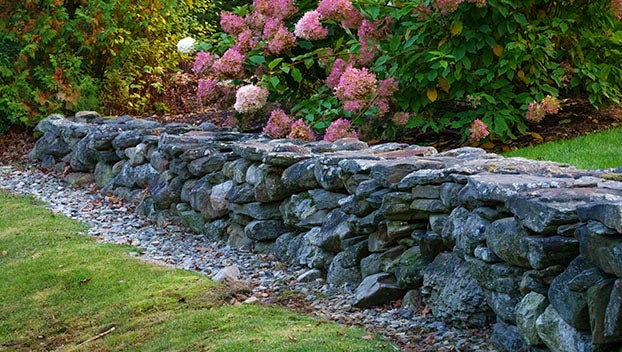Through the garden gate — The beauty of dry stacked stone walls
Published 2:07 pm Saturday, December 10, 2022
|
Getting your Trinity Audio player ready...
|
Throughout New England and the mountains in Virginia, there are stone walls built by farmers primarily from the mid-1700s until the early 1800s. There used to be 250,000 miles of stone walls in just Vermont. Even today, a walk through a patch of woodland is likely to reveal remnants of several stone walls.
The walls served two purposes — to mark boundaries and as a place to collect all the stones that appeared in fields every spring. The old timers said that the endless supply of stones was put there by the devil.
Most of these walls were simple affairs, only thigh high at most and dry stacked, meaning without the use of cement to provide permanence. And yet, a certain amount of art was required to stack the stones in such a way that the wall was solid, capable of withstanding repeated freezing and thawing. As time passed, the stones darkened and became covered with moss and lichens. They seemed to become part of the earth itself.
Sometimes the stones were just stacked on the ground in almost random piles, but at other times sturdier construction techniques were used. What to do? Dig a trench about six inches deep and as wide as the finished wall is going to be. Add a layer of crushed stone to provide drainage and help prevent heaving. Beginning with large stones, stack stones on this base. Use smaller stones to fill in gaps between the large ones. Continue adding stones until the desired height of the wall is reached and then finish off the top with relatively flat stones. Traditionally the large stones were called “two handers,” and the small ones were called “one handers.” Over time, a new stone wall becomes covered with moss and seems to become one with nature.
Gardeners are discovering the beauty of dry stacked stone walls. They mark boundaries and serve as unobtrusive backgrounds for plants. They are attractive even when in ruins. There’s nothing prettier than a rustic stone wall bordering hydrangeas or a woodland garden.
Dr. Cynthia Wood is a master gardener. Her email address is cynthia.crewe23930@gmail.com.







